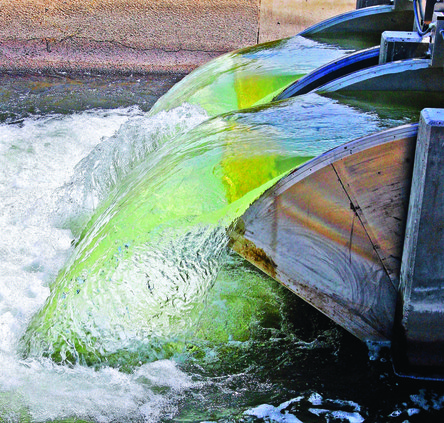Today could mark the beginning of the most challenging water year for the Manteca-Ripon-Lathrop area since the drought of 1924 forced the South Joaquin Irrigation District to make its last irrigation delivery to farmers on June 3 of that year.
The SSJID in recent months has cautiously expressed the belief between a third year of dry hydrology and water it has conserved that if the next 12 months are a repeat of the last two years or even slightly worse they could weather the new water year that ends Sept. 30, 2022.
The assessment it was likely do-able with tighter conservation than what is now happening and possibly, if they had to, a measured reduction across the board for farmers as well as urban users in Manteca, Ripon, and Lathrop was made before the state made its move.
That move was issuing a curtailment order for water use from rivers and such. It essentially seeks to undermine the front-of-the-line legally adjudicated water rights the SSJID and Oakdale Irrigation District have secured and developed over the last 112 years as allowed under California law.
It is why the SSJID and OID have joined water agencies up and down California in forcing a showdown with the state in court.
The two districts are especially leery of curtailment because of the legal precedent it could set.
Equally unnerving was a decision several months ago for the first time ever to tap into captured Stanislaus River water basin runoff to address Delta water quality issues that have been addressed historically — and under vetted operating procedures — by water behind Shasta Dam.
Shasta Lake, which is now down to 39 percent of average storage as of Sept. 30, has only 24 percent of its 4.5 million acre foot reservoir filled.
New Melones, the key reservoir on the Stanislaus River, had weathered the two-year drought better than other major reservoirs in California.
That prompted the state to draw down water from New Melones for the first time ever to deal with Delta water quality which is essential to the ecosystem as well as end users in urbanized Southern California as it minimizes salt water intrusion into water that heads out of the water basin via the California Aqueduct.
New Melones is now at 63 percent of average storage for Sept. 30 that translates into 35 percent of capacity or 843,613 acre feet of the 2.4 million acre foot reservoir.
Above New Melones are the Tri-Dam Project reservoirs that are a joint venture of SSJID and OID.
Beardsley is at 94 percent of average storage for Sept. 30 while Donnell’s is at 140 percent of average storage as the 64,300 acre foot reservoir is at 69 percent of its capacity with 44,343 acre feet of water.
The water year on the watershed that ended Thursday was the fifth driest in the roughly 150 years record have been kept.
Three of the six driest years on the Stanislaus River have now occurred during the current six year period stretching back to 2015. The fourth driest was in 2015, last year was the fifth driest and 2014 was the sixth driest.
Manteca, Lathrop, and Tracy all receive treated water from SSJID in addition to pumping water from aquifers. However, all areas in California are facing a looming mandate preventing them from taking more water out of the ground than they return in a given year.
The SSJID has ended its irrigation and the last diversion of water into Woodward Reservoir — the in-district storage facility — has been made until next spring.
The SSJID will use what water is in Woodward to treat water for urban customers throughout the winter.
To contact Dennis Wyatt, email dwyatt@mantecabulletin.com





